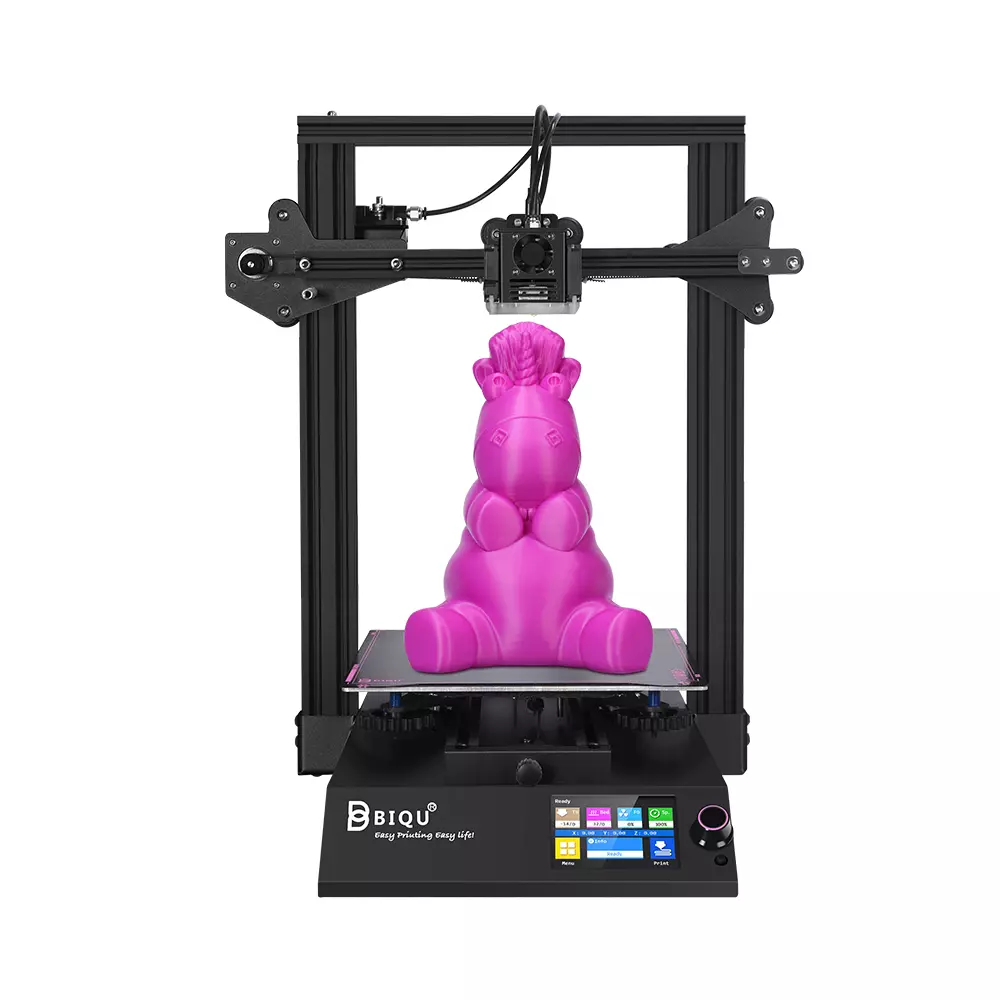Compare BIQU B1 vs Photon M3 Premium
Comparison between the best 3D printers
Choose the best 3D printer at the best price. The cheapest 3D printers are here.
Buy a 3D printer here with 3D Fila.
 |
 |
|
| Model | BIQU B1 |
Photon M3 Premium[BUY Photon M3 Premium] |
| Printing Material | Filament | Resin |
| Buy Filament for BigTreeTech BIQU B1 | Buy Resin forAnycubic Photon M3 Premium | |
| Estimated price | $269,00 | $600,00 |
| Manufacturer | BigTreeTech | Anycubic |
| Release Year | 2020 | 2022 |
| Print Volume [mm] | 235x235x270 | 123x219x250 |
| Printer Size [mm] | 412x402x492 | 330x350x630 |
| Weight [kg] | 8,00 | 19 |
| Power Loss Recovery | YES | NO |
| Maximum Resolution [mm] | 0,1 | 0,01 |
| Processor | 32 Bits BTT SKR V 1.4 | |
| Display | Touchscreen TFT 3,5'' | Display touchscreen 4,3'' |
| Power Supply | 24V / 360W | 150 W |
| Connectivity | SD / USB | USB / Wi-Fi |
| Operating systems | Windows, Mac, Linux | |
| Date of registration in the system | 2021-04-14 | 2023-01-19 |
| Release date | 2020 | 2022 |
| Extra features | The BIQU B1 is an advanced 3D printer with a silent 32-bit BTT SKR V1.4 motherboard and ARM Cortex-M3 CPU, offering DIY interfaces (I2C, SPI, WiFi) and dual Z-axis. Its dual BTT B1 TFT35 V3.0 operating system allows real-time monitoring and multiple printing modes, including G-code visualization effects. It stands out for its BIQU SSS (Super Spring Steel), ensuring easy model adhesion and simplified removal, with the possibility of using it on both sides. It includes a filament sensor, automatically pausing printing in case of filament breakage. The multicolored RGB lights integrated into the hotend allow you to view the printing status even at night. Additional notes include the need for a BIQU-specific Type-C cable and extra interfaces for smart filament sensor and BL Touch. | The Anycubic Photon M3 Premium Printer features MSLA technology with a 10-inch monochrome LCD screen and 8K resolution, ensuring prints with fine details thanks to the 28.5 micron resolution. It has a generous build volume (219 x 123 x 250 mm), an intelligent cooling system for greater durability, and a laser-etched build plate for better adhesion. It offers dual air filters, reducing odors, and the promise of compatibility with the Anycubic Cloud app. Its design includes an Art Deco-style UV curved glass and an efficient leveling system for the build platform. |
| Support for multiple colors and materials (AMS and CFS) | NO | NO |
Notes * |
||
| Cost-benefit | 7 / 10 | 7 / 10 |
| Hardware | 2 / 10 | 3 / 10 |
| Tela | . | . |
| Print volume | 3 / 10 | 3 / 10 |
| Performance | 1 / 10 | 9 / 10 |
| [BUY Photon M3 Premium] |
Conclusion |
| In comparing the BIQU B1 and the Anycubic Photon M3 Premium 3D printers, both devices cater to distinct printing needs and offer unique advantages at their respective price points. The **BIQU B1** stands out for its affordability and versatility. It features a more extensive print volume suitable for larger projects and includes advanced functionalities like power loss recovery and a sophisticated control system that allows for multiple printing modes. Its design also emphasizes ease of maintenance, with the inclusion of features that enhance user experience, such as a filament sensor and improved model adhesion. However, while it provides a commendable balance between performance and price, its print resolution is limited compared to higher-end models. On the other hand, the **Anycubic Photon M3 Premium** is positioned as a high-performance resin printer, offering exceptional detail courtesy of its 8K resolution and monochrome LCD technology. It is better suited for intricate designs that demand precision, making it an ideal choice for users focused on detailed prints, such as miniatures or intricate models. Despite its higher price, the Photon M3 Premium is designed for efficiency with a robust cooling system and user-friendly features. In conclusion, if budget and larger print volume are primary considerations, the BIQU B1 is a great choice, offering solid functionality at a lower cost. However, for users who prioritize resolution and precision in their prints and are willing to invest more, the Anycubic Photon M3 Premium provides superior performance for high-detail projects. The decision ultimately hinges on the specific printing needs, desired print quality, and budget of the user. |

